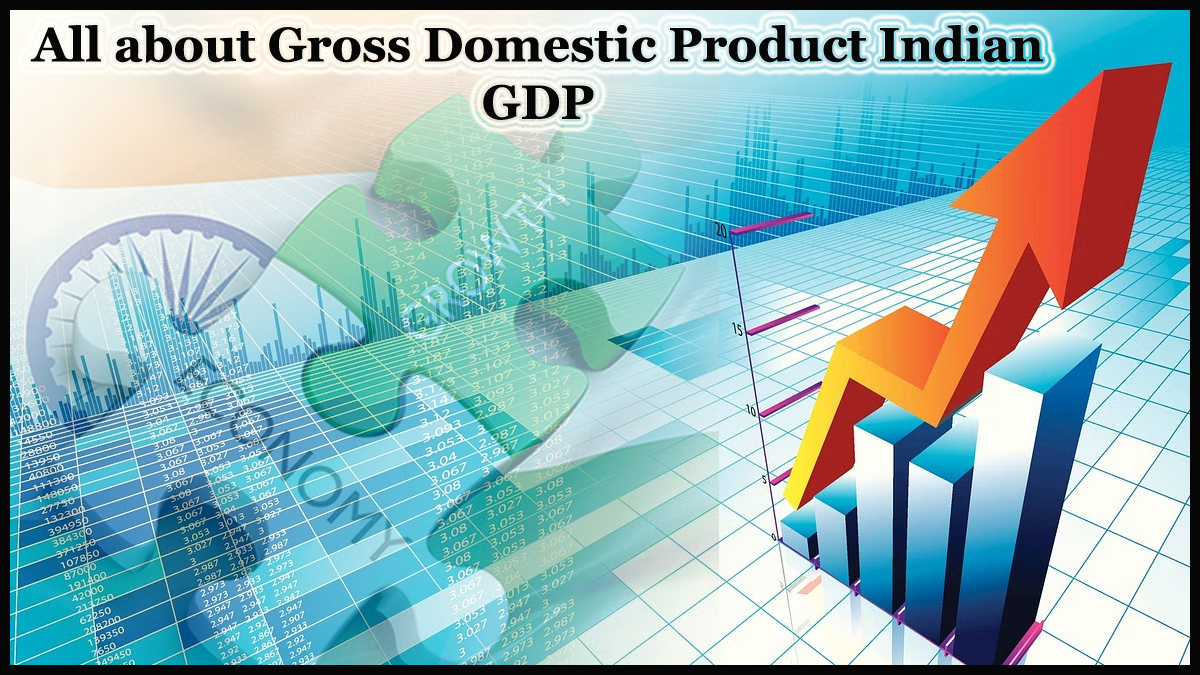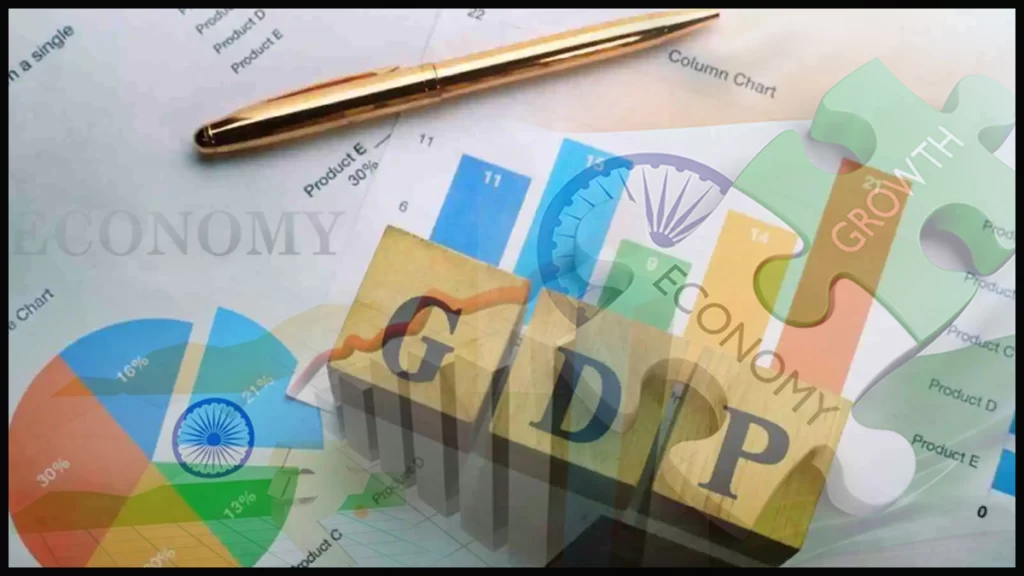
Gross Domestic Product (GDP) is a widely used indicator to measure the economic performance of a country. It represents the total monetary value of all final goods and services produced within a country’s borders in a specific period (usually a year). The GDP of India is the third largest in the world, behind the United States and China.
Here are some key facts and figures about the Indian GDP:
Size of the Indian economy: In 2020, India’s GDP was valued at $2.7 trillion, according to the International Monetary Fund (IMF). It is the world’s seventh-largest economy by nominal GDP and the third-largest by purchasing power parity (PPP).
Growth rate: India’s GDP growth rate has been volatile in the past decade, with highs of 8.2% in 2015 and 2016 and lows of 4.2% in 2019 and -7.7% in 2020 due to the COVID-19 pandemic.
Composition of GDP: India’s economy is dominated by the services sector, which accounts for more than 50% of GDP. The industrial sector (including manufacturing, mining, and construction) and agriculture sector contribute around 30% and 17% of GDP, respectively.

Major industries:
Major industries: India’s economy is diversified across a range of industries, including information technology, telecommunications, pharmaceuticals, textiles, automobiles, and consumer goods.
Trade: India is a major player in global trade, with exports and imports accounting for around 30% of GDP. The country’s major export partners include the United States, the United Arab Emirates, and China, while its major import partners are China, the United States, and the United Arab Emirates.
Government policies:
Government policies: India has implemented various policy measures to boost economic growth, including the Make in India initiative, which aims to promote manufacturing, and the Digital India program, which aims to increase access to digital technology.
Challenges: India faces a range of economic challenges, including poverty, income inequality, corruption, and infrastructure deficiencies. Additionally, the COVID-19 pandemic has had a significant impact on the Indian economy, causing job losses and supply chain disruptions.
Here are some additional points about the Indian GDP:
Population: India is the second-most populous country in the world, with a population of over 1.3 billion. Its large population is a key factor in the size and growth of the Indian economy.
Economic reforms: India has undertaken a range of economic reforms in recent decades, including liberalization, privatization, and globalization. These reforms have opened up the economy to foreign investment and increased competition, leading to increased economic growth.
Fiscal policy: The Indian government uses fiscal policy tools, such as taxation and government spending, to influence the economy. In recent years, the government has introduced measures such as the Goods and Services Tax (GST) and demonetization to reform the tax system and reduce corruption.
All about Gross Domestic Product
Monetary policy: The Reserve Bank of India (RBI) is the country’s central bank and is responsible for implementing monetary policy. The RBI uses tools such as interest rates and open market operations to regulate the money supply and control inflation.
Human development: Despite its large and growing economy, India faces challenges in terms of human development, such as high levels of poverty, malnutrition, and illiteracy. The government has launched initiatives such as the National Rural Employment Guarantee Act (NREGA) and the National Health Mission (NHM) to address these issues.
Future prospects: Despite the challenges it faces, India’s economy has strong long-term prospects due to its large and growing population, growing middle class, and strategic location. The government has set a target of making India a $5 trillion economy by 2024, and is implementing various policies and initiatives to achieve this goal.
Here are some additional points about the Indian GDP:
Regional disparities: India has significant regional disparities in terms of economic development. Also with some states and regions experiencing much higher levels of growth than others. The government has launched initiatives such as the North East Region Vision 2020. And the Backward Regions Grant Fund to address these disparities.
Infrastructure: India faces significant infrastructure challenges, including inadequate transportation networks, power shortages, and limited access to clean water and sanitation. The government has launched initiatives such as the Smart Cities Mission. And the Bharatmala Pariyojana to improve infrastructure and promote economic growth.
Foreign investment:
Foreign investment: India has become an increasingly attractive destination for foreign investment in recent years. Also due to its large and growing market, skilled workforce, and business-friendly policies. The government has introduced measures such as the Foreign Direct Investment (FDI) policy. And the Start-up India initiative to attract foreign investment.
Innovation: India has a vibrant start-up ecosystem, with a growing number of entrepreneurs. And investors focused on developing innovative technologies and business models. The government has launched initiatives such as the Atal Innovation Mission. And the Digital India initiative to promote innovation and entrepreneurship.
All about Gross Domestic Product
Environmental sustainability: India faces significant environmental challenges, including air pollution, deforestation, and climate change. The government has launched initiatives such as the National Clean Air Programme. And the National Solar Mission to promote environmental sustainability and reduce greenhouse gas emissions.
International trade agreements: India is a member of several international trade agreements. Also including the World Trade Organization (WTO) and the Regional Comprehensive Economic Partnership (RCEP). These agreements have opened up new markets for Indian exports and increased competition in the domestic market.
Demographic dividend: India’s large and youthful population is often referred to as a “demographic dividend.” And as it represents a significant potential source of economic growth. However, the government will need to invest in education and skills development. And to ensure that young people are able to participate in the economy and contribute to long-term growth.
Here are some additional points about the Indian GDP:
Agriculture: Agriculture is an important sector of the Indian economy. Also employing around 50% of the workforce and contributing around 17% to GDP. The government has launched initiatives such as the Pradhan Mantri Fasal Bima Yojana. And the Pradhan Mantri Krishi Sinchai Yojana to support farmers and increase agricultural productivity.
Manufacturing: India’s manufacturing sector has been growing rapidly in recent years. And driven by government initiatives such as the Make in India program and the National Manufacturing Policy. The government is seeking to increase the share of manufacturing in GDP from around 16% to 25% by 2025.
Also Read – All about Indian National Cricket Team
Services: The services sector is the largest sector of the Indian economy, accounting for around 55% of GDP. Key sub-sectors include IT and business process outsourcing, financial services, and tourism. The government has launched initiatives such as the Digital India program. And the e-Tourist Visa scheme to support the growth of the services sector.
All about Gross Domestic Product
Informal economy: A significant portion of the Indian economy operates in the informal sector. Also including street vendors, small businesses, and agricultural workers. These workers often lack formal job protections and access to social security benefits.
Gender gap: India has a significant gender gap in terms of economic participation. And with women accounting for only around 22% of the workforce. The government has launched initiatives such as the Beti Bachao Beti Padhao campaign. And the National Mission for Empowerment of Women to address this gap.
Also Read – All about Ravichandran Ashwin Indian Cricketer
Education: Education is a key factor in promoting long-term economic growth and reducing poverty. The government has launched initiatives such as the Sarva Shiksha Abhiyan. And the Rashtriya Madhyamik Shiksha Abhiyan to increase access to education.
All about Gross Domestic Product
Healthcare: Healthcare is another key factor in promoting human development and economic growth. The government has launched initiatives such as the Ayushman Bharat program. And the National Health Stack to improve healthcare access and outcomes.
Corruption: Corruption remains a significant challenge for the Indian economy. Also with widespread bribery and embezzlement among government officials and business leaders. The government has launched initiatives such as the Digital India program. And the Aadhaar biometric identification system to reduce corruption and promote transparency.
Indian GDP Growth data Previous 10 years
The Indian GDP growth data for the previous 10 years is as follows:
| Year | GDP Growth Rate |
| 2012 | 5.5% |
| 2013 | 6.4% |
| 2014 | 7.4% |
| 2015 | 8.2% |
| 2016 | 8.2% |
| 2017 | 7.2% |
| 2018 | 6.8% |
| 2019 | 4.2% |
| 2020 | -7.7% |
| 2021 | 9.5% |
Note that the GDP growth rate for 2020-2021 is affected by the COVID-19 pandemic and the resulting economic disruptions.
Also Read – Blood Sugar Tests for Diabetes Management

One thought on “All about Gross Domestic Product Indian GDP”